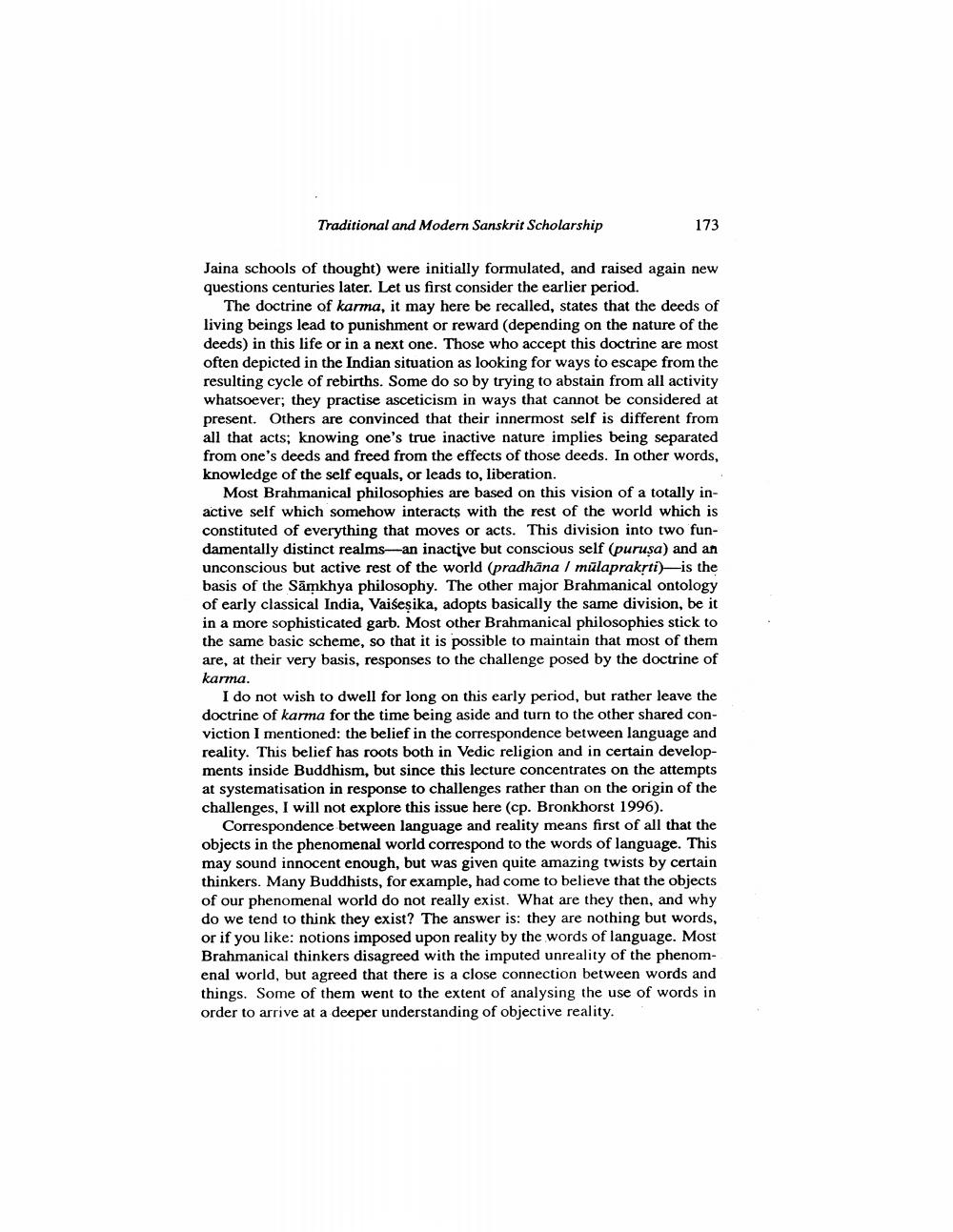________________
Traditional and Modern Sanskrit Scholarship
173
Jaina schools of thought) were initially formulated, and raised again new questions centuries later. Let us first consider the earlier period.
The doctrine of karma, it may here be recalled, states that the deeds of living beings lead to punishment or reward (depending on the nature of the deeds) in this life or in a next one. Those who accept this doctrine are most often depicted in the Indian situation as looking for ways to escape from the resulting cycle of rebirths. Some do so by trying to abstain from all activity whatsoever; they practise asceticism in ways that cannot be considered at present. Others are convinced that their innermost self is different from all that acts; knowing one's true inactive nature implies being separated from one's deeds and freed from the effects of those deeds. In other words, knowledge of the self equals, or leads to, liberation.
Most Brahmanical philosophies are based on this vision of a totally inactive self which somehow interacts with the rest of the world which is constituted of everything that moves or acts. This division into two fundamentally distinct realms-an inactive but conscious self (purusa) and an unconscious but active rest of the world (pradhana / mūlaprakrti)is the basis of the Samkhya philosophy. The other major Brahmanical ontology of early classical India, Vaišeşika, adopts basically the same division, be it in a more sophisticated garb. Most other Brahmanical philosophies stick to the same basic scheme, so that it is possible to maintain that most of them are, at their very basis, responses to the challenge posed by the doctrine of karma.
I do not wish to dwell for long on this early period, but rather leave the doctrine of karma for the time being aside and turn to the other shared conviction I mentioned: the belief in the correspondence between language and reality. This belief has roots both in Vedic religion and in certain developments inside Buddhism, but since this lecture concentrates on the attempts at systematisation in response to challenges rather than on the origin of the challenges, I will not explore this issue here (cp. Bronkhorst 1996).
Correspondence between language and reality means first of all that the objects in the phenomenal world correspond to the words of language. This may sound innocent enough, but was given quite amazing twists by certain thinkers. Many Buddhists, for example, had come to believe that the objects of our phenomenal world do not really exist. What are they then, and why do we tend to think they exist? The answer is: they are nothing but words, or if you like: notions imposed upon reality by the words of language. Most Brahmanical thinkers disagreed with the imputed unreality of the phenomenal world, but agreed that there is a close connection between words and things. Some of them went to the extent of analysing the use of words in order to arrive at a deeper understanding of objective reality.




